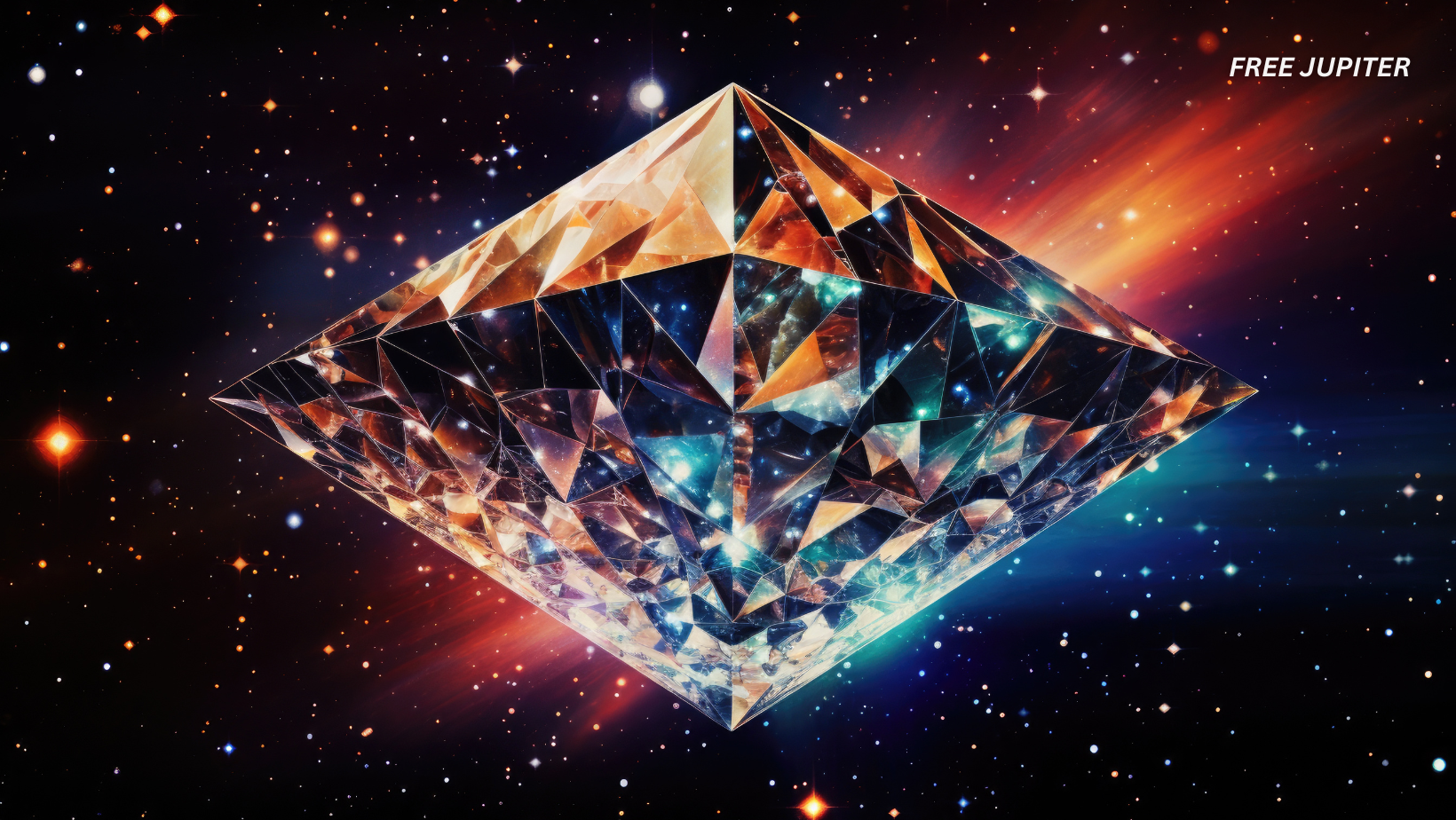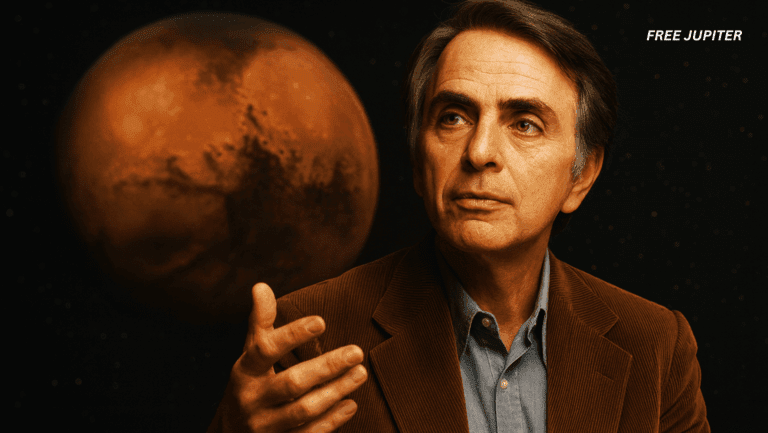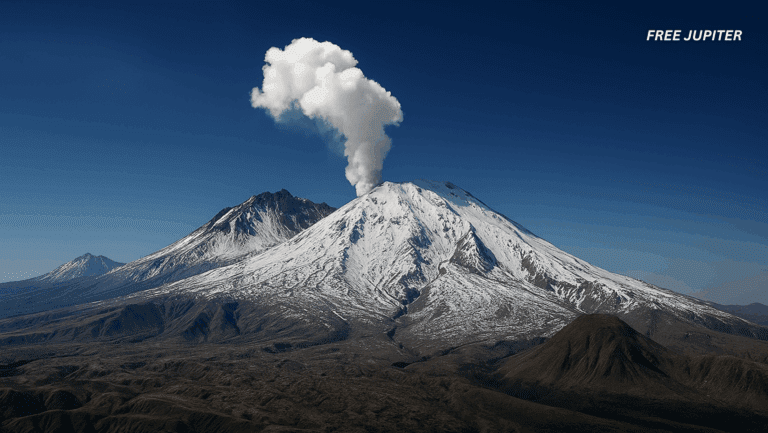Friendly Note: FreeJupiter.com shares general info for curious minds 🌟 Please fact-check all claims—and always check health matters with a professional 💙
The universe never fails to surprise us, and recent findings from the National Aeronautics and Space Administration (NASA) have once again pushed the boundaries of what we thought possible. Scientists have uncovered an extraordinary object in the vast reaches of space—an entity so unique and valuable that it might be the most spectacular “gemstone” ever detected.
The Discovery of a Cosmic Diamond
Astronomers have long speculated about the existence of exotic materials in space, but the recent detection of an object known as PSR J1719-1438b has exceeded all expectations. This celestial body, officially designated as PSR J1719-1438b, is believed to be the remnant core of a star that once shone brightly before its outer layers were stripped away. The process responsible for this transformation is as fascinating as the object itself.
The transformation began when a neutron star—a highly dense, rapidly spinning stellar corpse—came into close proximity with its companion. The intense gravitational forces exerted by the neutron star, which also acts as a millisecond pulsar, siphoned off the outer layers of the companion star, leaving behind a core primarily composed of solid carbon. This core, under immense pressure, has crystallized into a structure that, for all intents and purposes, resembles a diamond on an unimaginable scale.
NASA’s official statements describe this object as being roughly five times larger than our own planet. To put this into perspective, if you could somehow bring this cosmic diamond down to Earth, it would dwarf every known diamond ever mined or even imagined. The sheer size of this celestial gem is enough to capture the imagination of anyone with even a passing interest in space or science.
The Science Behind the Stellar Gem
The story of PSR J1719-1438b is not just about its size or its glittering composition—it’s a tale of cosmic evolution. When stars like our Sun reach the end of their lives, they often shed their outer layers, leaving behind a core that can become a white dwarf. In rare cases, however, these white dwarfs find themselves in the gravitational embrace of a neutron star or pulsar.
As the pulsar’s gravity pulls material from the white dwarf, the core is left exposed. Under the extreme pressures and temperatures of this environment, the carbon within the core is compressed and crystallized, forming what scientists believe to be a diamond-like structure. This process is not only rare but also provides valuable insights into the life cycles of stars and the exotic objects they can become.
NASA’s findings, as reported by various scientific outlets, highlight the importance of such discoveries in expanding our understanding of the universe. The agency’s statement, referencing The Times of India, emphasized that “1438b, in all its essence, is a diamond that is five times bigger than that of the Earth!” This simple yet profound description captures the wonder and excitement surrounding this discovery.
Read more: Scientists Make History By Successfully ‘Freezing’ Light in Unprecedented Physics Experiment
Otherworldly Planets and Extreme Conditions
While PSR J1719-1438b is undoubtedly a standout find, it is not the only remarkable object to capture the attention of astronomers in recent years. Just last year, NASA’s James Webb Space Telescope made headlines with the discovery of a planet known as 55 Cancri e.
Located approximately 41 light-years from Earth, 55 Cancri e is classified as a super-Earth. This term refers to planets that are larger than Earth but smaller than gas giants like Neptune. In the case of 55 Cancri e, the planet is nearly twice as wide as Earth and has a mass about nine times greater.
What makes 55 Cancri e particularly fascinating is its orbit. The planet circles its parent star, 55 Cancri A, at an incredibly close distance. So close, in fact, that a single orbit takes just 17 hours. This proximity results in surface temperatures that soar to around 2,400 degrees Celsius—hot enough to melt rock and create vast oceans of lava.
The extreme conditions on 55 Cancri e make it one of the most inhospitable worlds ever discovered. The surface is perpetually molten, with rivers of lava flowing across its landscape. Despite these harsh conditions, the planet has managed to retain a secondary atmosphere, likely formed by gases released through volcanic activity.
Scientists believe that this atmosphere is the result of ongoing geological processes, even in the face of such extreme heat. The presence of a secondary atmosphere is a significant finding, as it suggests that the planet has undergone substantial geological evolution despite its hostile environment.
The Diamond Connection
One of the most intriguing aspects of 55 Cancri e is its composition. Studies and research indicate that a significant portion of the planet’s mass—perhaps as much as one-third—could be composed of diamonds. This revelation has challenged scientists’ understanding of how planets form and what they are made of.
The idea that a planet could be rich in diamonds is not just a flight of fancy; it is supported by scientific evidence. The intense pressure and heat on 55 Cancri e, combined with its carbon-rich composition, create the perfect conditions for diamond formation. This discovery has opened up new avenues of research into the diversity of planetary compositions and the processes that shape them.
Expanding Our Cosmic Horizons
The discoveries of PSR J1719-1438b and 55 Cancri e are more than just scientific curiosities—they are windows into the incredible diversity of the universe. Each new finding challenges our assumptions and expands our understanding of what is possible.
For scientists, these discoveries are opportunities to refine theories about stellar evolution, planetary formation, and the conditions that can exist beyond our solar system. For the general public, they are reminders of the vastness and wonder of the cosmos.
NASA’s ongoing efforts to explore and understand the universe continue to yield groundbreaking results. The agency’s use of advanced telescopes, such as the James Webb Space Telescope, has revolutionized our ability to detect and study distant objects. These tools allow us to peer deeper into space than ever before, uncovering secrets that were once beyond our reach.
The Implications for Science and Society
The discovery of diamond-like objects and diamond-rich planets has implications that extend beyond astronomy. These findings challenge our understanding of the building blocks of planets and the processes that shape them. They also raise intriguing questions about the potential for exotic materials in space and the possibilities for future exploration.
For example, the idea that a planet could be rich in diamonds raises the question of whether such materials could ever be mined or utilized. While the practical challenges of accessing these distant worlds are immense, the mere possibility sparks the imagination and inspires new ideas about the future of space exploration.
Moreover, these discoveries highlight the importance of continued investment in space science and technology. Each new finding builds on the work of previous generations of scientists and paves the way for future discoveries. The more we learn about the universe, the better equipped we are to understand our place within it.
The Wonder of Space Exploration
At its core, the discovery of objects like PSR J1719-1438b and 55 Cancri e is a testament to the power of human curiosity and ingenuity. For centuries, humans have looked to the stars and wondered what lies beyond. Today, thanks to advances in technology and the dedication of scientists around the world, we are able to answer some of those questions and uncover new mysteries.
The universe is vast, diverse, and full of surprises. Each new discovery reminds us of how much we have yet to learn and how much more there is to explore. Whether it’s a diamond the size of a planet or a world covered in lava, the cosmos continues to inspire awe and wonder.
Read more: Schrödinger’s Cat Theory May Prove That The Multiverse Exists. Here’s How.
Looking to the Future
As we look to the future, it is clear that space exploration will continue to yield remarkable discoveries. New telescopes, advanced spacecraft, and innovative scientific techniques will allow us to probe deeper into the universe and uncover even more extraordinary objects.
The discoveries of PSR J1719-1438b and 55 Cancri e are just the beginning. They serve as a reminder that the universe is full of surprises and that the next great discovery could be just around the corner. For scientists and space enthusiasts alike, the future is bright—and perhaps, a little bit glittery.










